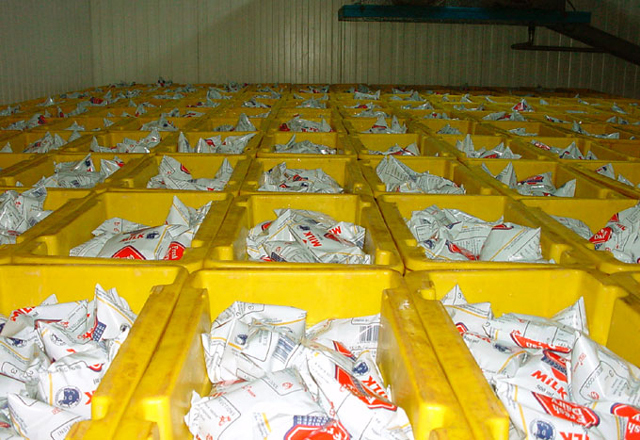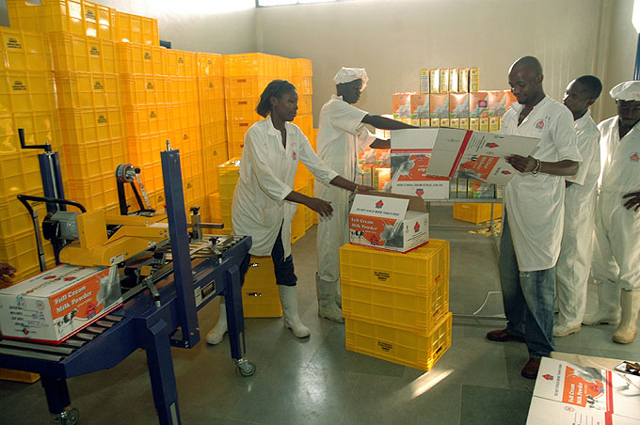Dairy sector likely to grow faster with new players
SOFAT Mwebembezi, a farmer in Mbarara is anticipating a better market next year. This is because there is a new player entering the dairy sector.
By Macrines Nyapendi
SOFAT Mwebembezi, a farmer in Mbarara is anticipating a better market next year. This is because there is a new player entering the dairy sector. The fact that the Pearl Dairies plant will be based in Mbarara is even better news for him.
“I expect to cut down on my production costs by saving sh100 per litre which has been the cost of transporting milk for processing plants in Kampala. The market is going to be more competitive which will offer us better prices,” Mwebembezi says.
He adds that by having two plants processing 700,000 litres daily, on top of the exisiting 300,000, farmers losses will be cut down by reducing milk spillage.
Besides Pearl Dairy, dairy farmers through the Uganda Crane Creameries Cooperative Union (UCCCU) are constructing a 200,000-litre processing plant in Mbarara that may start production mid next year.

“The game plan will change for the better the moment the new entrants commence processing because south western Uganda will house the two large plants on top of the existing four. With 15 plants looking at the same people as a source of their raw material; prices will get better and the sector will attract massive investment in marketing and research,” says another dairy farmer.
The rapid growth of the dairy sector is attributed to the growing middle class in Uganda and the taste preference of the various dairy products. Urban dairy consumption has gone up by 30% due to continued encouragement by health workers for people to consume dairy products.
The shift has dramatically boosted demand and opened up opportunities in the sub-sector.
Dr. Hanifa Bachou, the head of Mwana Mugimu says: “Milk is a necessity because it contains two important proteins that are easily digestible and absorbable so each of the 34m Ugandans need whey and casein in their diets.”
Pearl Dairies will focus on producing Casein, a protein that makes up 80% of milk while whey is 20%.
Per capita milk consumption in Uganda is 50litres/person per annum which is way below the WHO recommended 200litres per person per year.
With over 7.8m livestock, Uganda’s five milk sheds produce about 1.5 billion litres of milk annually. About 800,000 litres are collected daily by the 98 collection centres but only 500,000 litres are processed. There are 15 dairy processing plants with a capacity of 810,000 litres. The processing plants are producing below installed capacity due to unavailability of raw milk.

The dairy products include pasteurised and powdered milk, UHT, cheese, yoghurt, butter, cream, ice cream and ghee.
The informal sector handles over 80% of the milk produced daily, while the remaining 20% is processed.
The bulk of the milk produced is consumed within the country unprocessed and in various forms and the surplus is exported to Rwanda, Congo, and Southern Sudan.
Clayton Arinanye, the general manager of UCCCU said: “Dairy farming is on the increase in Uganda. In the last decade, the number of smallholder dairy farms has greatly increased.
Scarcity of dietary animal protein, improvement in the standard of living in the country as well as the fast-growing human population favour expansion of the industry”.
Massive plundering of the fisheries sector has left Ugandans with not so many animal protein alternative sources and opened opportunities for the dairy sector.
According to market players, the demand for exotic dairy breed in-calf heifers has tripled in the past five years and it has pushed up the prices from sh1.5m to sh3m per calf. The numerous heifer projects as well as the regular dairy farmers are in great need of young stock for their farms.
Arinanye says there are not so many commercial dairy farmers in Uganda because it requires large capital investments and it is labour-intensive.
“Uganda still imports milk and other dairy products because the demand is far higher than the supply.
The only challenge the sector faces is unstable supply due to the lack of alternative feeds during the long dry spells that are experienced in the cattle corridor,” he explains.
Milk prices are sensitive to the supply so they skyrocket during the dry season when production/supply drops due to lack of sufficient water and feeds.

“The sector’s huge potential, coupled with the increase of small and medium size dairy processors and the long standing ban on imported dairy products will propel it to greater heights in the next 10 years and rank among the highest forex earners,” Akash Kumar, the managing director of Pearl Dairy says.
The dairy sector has registered commendable average growth of between 8-10% since 1991.
Annual production of milk by 2008 had reached an estimated 1.526 billion litres from 365 million in 1991. The 2010 dairy sector market value was $365m.
The major drivers for this growth have been the demand and the country’s low cost of producing milk compared to other countries in the world.
Uganda’s dairy products were in 2008 endorsed for export to the Common Market for Eastern and Southern Africa (COMESA), giving the sector wider access to a market comprising of over 119 mil